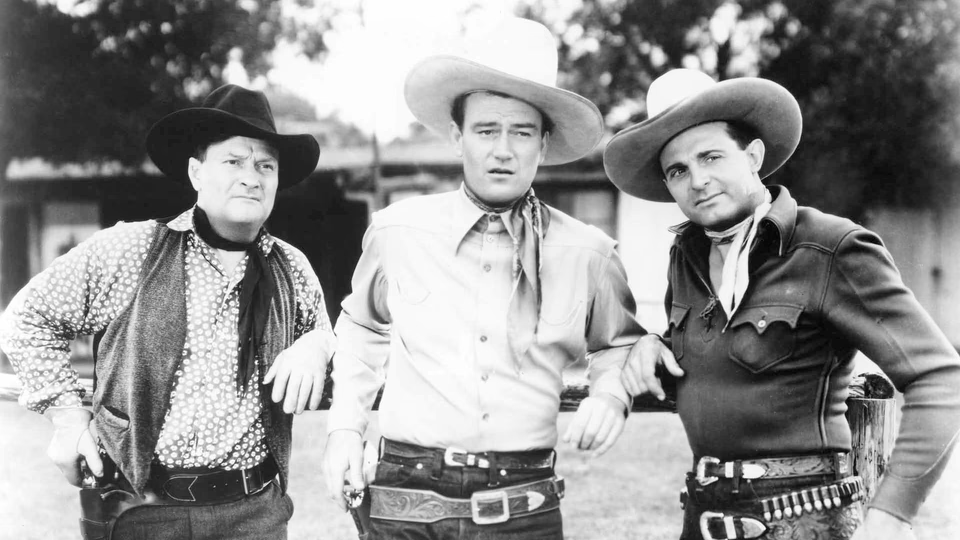Pals of the Saddle

John Wayne saddles up for his first ride as Stony Brooke in Republic’s Three Mesquiteers series, and the Duke already towers over this B-western like a man among boys. Too bad he’s stuck with such lousy company.
This isn’t your typical oater. Sure, there are horses and six-shooters, but Wayne’s framed for murder and goes undercover to bust a poison gas smuggling ring violating the Neutrality Act. World War II looms over the prairie, making this contemporary western feel surprisingly urgent.
The plot clicks along nicely when Wayne’s flying solo. He fakes his death, dons unconvincing black whiskers, and poses as a crotchety miner straight out of the Gabby Hayes playbook. The disguise wouldn’t fool a nearsighted sheriff, but Wayne sells it with that trademark swagger.
Then his partners show up and the movie stumbles. Max Terhune rides with a ventriloquist dummy—need I say more? Ray “Crash” Corrigan proves so inept he can’t figure out how to shoot a lock off a door despite packing heat.
The script wisely sidelines the dead weight for long stretches, essentially giving Wayne his own picture. It’s a smart move that hints at an even better film lurking beneath—one that ditches the Mesquiteers entirely and lets Wayne carry the load.
When the climax arrives, the formula kicks in: Wayne gets captured, the bumbling partners stage a rescue. It’s backwards storytelling. Better to put leading lady Doreen McKay in peril and let Wayne save the day. At least the flaming stagecoach finale delivers genuine thrills.
Wayne elevates every scene he’s in. Less than a year before Stagecoach would make him a star, he’s already commanding the screen with that easy confidence. He ducks through doorways, fills up the frame, and makes you forget you’re watching a quickie Republic programmer.